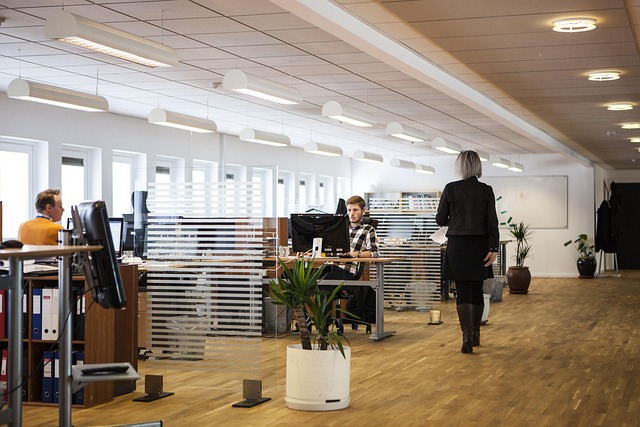Unlocking Creativity: Innovative Approaches to Business Problem-Solving
In today’s dynamic business environment, creativity and innovation are more crucial than ever. Companies face a plethora of challenges, from shifting consumer preferences to technological advancements, all requiring adaptive solutions. Traditional problem-solving methods often fall short, paving the way for innovative approaches that harness creativity in finding effective resolutions. In this article, we explore various strategies that can nurture a culture of creativity within organizations and provide effective solutions to complex business problems.
The Importance of Creativity in Business
Creativity fosters innovation, differentiation, and resilience in businesses. In a landscape teeming with competition, the ability to think creatively can set a company apart. It encourages an open mindset where employees feel empowered to explore unconventional solutions. By leveraging creativity, businesses can not only address immediate problems but also anticipate future challenges and seize new opportunities.
Understanding Creative Problem-Solving
Creative problem-solving (CPS) involves approaching a problem with a fresh perspective and developing innovative solutions. Unlike analytical problem-solving, which typically follows a linear path, CPS encourages divergent thinking. This method enables teams to brainstorm various possibilities before converging on a viable solution. The process typically includes several stages: identifying the problem, generating ideas, evaluating and refining solutions, and implementing the chosen approach.
Cultivating a Creative Environment
Innovation cannot thrive in stifling environments. A culture that encourages exploration, experimentation, and even failure fosters creativity. Here are several key components of a nurturing environment:
Encouraging Experimentation
Employees should feel free to experiment without fear of repercussions. This mindset allows for trial and error, essential ingredients in the creative process. Companies can encourage experimentation by allocating resources to innovative projects or pilot programs, thereby providing safe spaces for testing new ideas.
Promoting Collaboration
Collaboration is a catalyst for creativity. Cross-disciplinary teams can yield a wealth of perspectives, enhancing the quality of ideas generated. Implementing team-building activities that bring together employees from different departments can break down silos and encourage dialogue, leading to novel problem-solving strategies.
Offering Continuous Learning Opportunities
Ongoing education and skill development fuel creativity. Employers should invest in training programs, workshops, and seminars that expose employees to new methodologies and tools. By broadening their knowledge base, employees can apply various concepts and techniques to problem-solving.
Innovative Approaches to Problem-Solving
Now that we understand the importance of fostering a creative environment, let’s delve into innovative approaches that can enhance business problem-solving:
Design Thinking
Design Thinking is an iterative, human-centered approach to problem-solving that emphasizes empathy and experimentation. It consists of five stages: empathize, define, ideate, prototype, and test. By empathizing with users, businesses can identify underlying issues and better understand their needs. This insights-driven approach can lead to innovative product development, improved customer experiences, and effective service delivery.
Agile Methodologies
The Agile framework, primarily used in software development, can be applied to various business operations. Agile focuses on iterative progress, allowing teams to respond swiftly to changing needs and gather feedback throughout the process. By working in short cycles or sprints, teams can quickly adapt their strategies and develop solutions in real time, creating a culture of continuous improvement.
Creative Brainstorming Techniques
Brainstorming is a group creativity technique designed to generate a multitude of ideas in a short time. Employing diverse brainstorming methods can spark creativity. Techniques such as mind mapping, storyboarding, and the SCAMPER method (substitute, combine, adapt, modify, put to another use, eliminate, and reverse) encourage participants to think outside the box, generating a wealth of ideas to explore.
Using Technology to Enhance Creativity
Modern technologies, such as artificial intelligence, machine learning, and data analytics, can be harnessed to unlock creative solutions. AI-driven tools can identify patterns and trends, enabling teams to make informed decisions rapidly. Additionally, collaborative platforms can foster communication and idea-sharing among remote teams, further enhancing the creative process.
Mindfulness and Creative Thinking
Integrating mindfulness practices into the workplace can significantly benefit creative thinking. Mindfulness enhances focus and awareness, allowing individuals to step back from distractions and engage more deeply with their thoughts. Techniques such as meditation or mindfulness exercises can create mental space for innovative ideas to emerge.
Case Studies: Businesses Embracing Creativity
To illustrate the impact of these innovative approaches, let’s examine a few successful case studies.
Google’s “20% Time” Policy
Google is renowned for fostering innovation through its “20% Time” initiative, which allows employees to dedicate 20% of their workweek to projects they’re passionate about, even if these projects don’t align with their official responsibilities. This approach has led to the development of successful products like Gmail and AdSense, highlighting the value of creative freedom within the workplace.
Pixar’s Braintrust Meetings
Pixar Animation Studios employs a unique feedback method called “Braintrust.” During these meetings, teams present their work, receiving candid feedback from peers. This open exchange of ideas fosters creative collaboration and encourages risk-taking, contributing to the studio’s reputation for producing innovative animated films.
Airbnb’s Design-Driven Approach
Airbnb uses a design-driven strategy, integrating user insights into their product development process. The company encourages team members to immerse themselves in customer experiences, leading to data-driven decisions and creative problem-solving. This approach emphasizes empathy, enabling Airbnb to continuously innovate and address customer pain points effectively.
Overcoming Challenges in Creative Problem-Solving
While promoting creativity is essential, businesses may encounter obstacles that hinder creative problem-solving. These can include:
Fear of Failure
The fear of making mistakes can stifle creativity. Employees may hesitate to share unconventional ideas due to concerns about judgment or negative consequences. Creating a safe environment where failure is viewed as a learning opportunity can encourage more open dialogue.
Organizational Silos
Silos within departments can impede collaboration and creativity. Encouraging cross-functional teams and communication can help bridge these gaps, fostering a culture of collective problem-solving.
Resistance to Change
Change often meets resistance, particularly in well-established organizations. Leaders must cultivate a culture of adaptability, demonstrating that change is necessary to thrive in a competitive landscape. Communication, transparency, and involving employees in the change process can alleviate resistance.
Conclusion
In conclusion, unlocking creativity in business problem-solving is no longer a luxury but a necessity. By cultivating a creative environment and embracing innovative approaches like Design Thinking, Agile methodologies, and technology integration, companies can navigate challenges effectively and drive sustainable growth. The stories of successful businesses reinforce the idea that fostering creativity is an investment that pays dividends.
As organizations strive to adapt in an ever-changing world, embracing a culture of creativity will empower them to think differently, innovate, and ultimately thrive amidst the complexities of modern business challenges.



